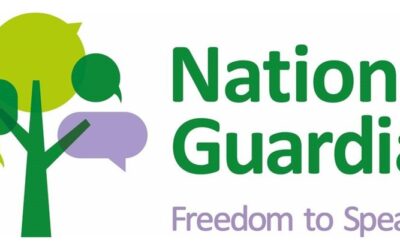This is Max’s* story: “No-one was physically attacking me, shouting at me or even being rude to me, but I felt scared and sick about going to work. I told myself I was just over-reacting and being too sensitive. But I had bad dreams and felt watchful and wary even on my days off. I didn’t want to go to work, but I worried about what might be said about me if I wasn’t there. I couldn’t really put my finger on what was happening, but I knew that I felt bad every time a particular person spoke to me, even when they seemed friendly. I would often get left out of things, be criticised in front of others, and my ideas always seemed to get shot down. I would walk away from these encounters feeling confused and concluded that I must just be over-reacting and too sensitive. And clearly just rubbish at my job. These thoughts would go round and round in my head, and my anxiety escalated. Until I shared them with a trusted colleague, who said, “Me too – I actually think it’s bullying.” That was a game changer.”
*Names have been changed
The latest NHS Staff survey from 2019 reported that 12% of staff experienced harassment, bullying or abuse from their managers, and 19% from their colleagues – in the last 12 months alone.
While harassment and physical or sexual assault clearly have terrible impact and can be difficult and painful to address, they are at least fairly easy to identify.
The sort of insidious bullying described by Max is much harder to name and, therefore, to tackle. It can go unchecked for years, leaving a trail of anxiety, helplessness, and damaged self-esteem. Insidious bullying can create stifling workplace cultures that are damaging for staff and ultimately for patients. Knowing how to identify it is the first step in taking action.
3 steps to identify insidious bullying:
1. Recognise different types of bullying
When we think of bullying, we generally think of overtly nasty behaviour. It can be more difficult to recognise those bullying behaviours that are covertly nasty, such as giving back-handed compliments; undermining you in public or behind your back; isolating you from colleagues; or creating a sense of dependency. These may be framed or delivered in very subtle ways that can be explained away by suggesting you are confused, mis-interpreting the situation, or even imagining things. This is akin to gaslighting – the deliberate attempt to make you question your own sanity – and is another form of bullying. Being professionally undermined, humiliated, isolated or gaslit are all forms of insidious bullying.
If someone is rude to you at work there could be a whole host of reasons for their behaviour – maybe they’re having a bad day, or not feeling well, or under a lot of pressure. Understanding this can help you to take things less personally, and lessen the impact of isolated events. But if this behaviour is persistent, and not addressed, being too empathic can collude with a culture that accepts uncivil behaviour.
If you are feeling threatened, isolated or humiliated due to someone’s behaviour at work, it’s important to acknowledge this, no matter what the reasons behind the behaviour might be. It’s possible that this behaviour is entirely unintentional, and that the person would be horrified to learn how you feel. It’s also possible that there is conscious intent to exert power over you – but it’s unlikely that anyone would admit to that.
So don’t get caught up in trying to understand why someone would behave this way, and second-guessing yourself. The impact of the behaviour is key, whatever the reasons behind it.
2. Keep a log
Keep a log of all the encounters you have with this person or group of people that make you feel bad. You may decide never to show this to anyone else, but it is useful in several ways.
Firstly, it can help you gain some perspective. Often writing things down can help us get emotional distance from a situation and develop new insights. It may help you figure out ways of responding next time it happens.
Secondly, keeping a log can help to identify patterns. Insidious bullying often takes the form of very minor incidents that in themselves are not significant but when seen in the context of ongoing behaviours a pattern of chronic bullying can emerge.
Thirdly, a log can help you to build up valuable evidence should you wish to take formal action.
Record the date, time, place, what was said or done and whether there were any witnesses. Also record the impact this had on you (how you felt, what you were thinking, what you did), both immediately and in the aftermath. It could also be helpful to record what you think the longer term impact of this behaviour could be (e.g. affecting how safe you feel discussing work dilemmas with colleagues etc.).
3. Talk about it (officially or unofficially)
Talk about these incidents with your friends, family and trusted colleagues. You may want to share the log you have kept. This will help you to reality-check your experiences and reactions. It is always helpful to reach out to those who love and respect you, especially when your confidence is being undermined. But talking to others will also help you to name more clearly what is going on so that you can take action.
You could also talk to your organisation’s Freedom to Speak Up Guardian (or equivalent). They will be able to have a confidential conversation with you to help you clarify whether the behaviour constitutes bullying in the eyes of the organisation, and what your options are.
Next steps:
If you think you are being bullied at work and want to speak to someone in confidence about your experiences call the National Bullying Helpline on 0845 2255787.
If you are struggling with the emotional impact of being bullied at work and want to address this in therapy book a free 20-minute consultation to discuss how I can help.




